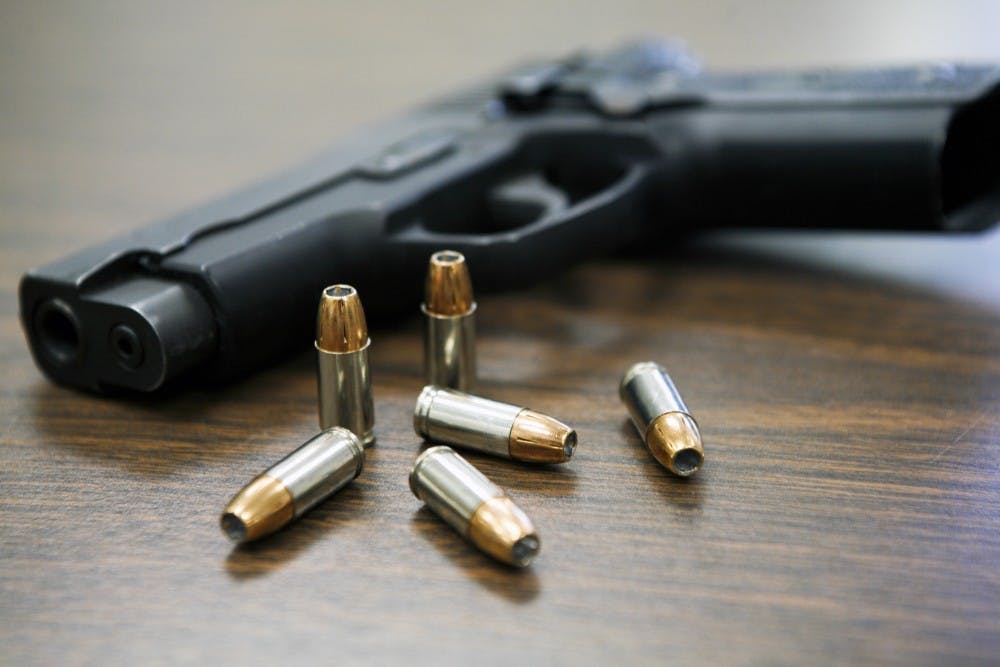Research by one Penn professor produced a surprising result about intimate partner violence: The involvement of a gun reduced the likelihood of injury.
Susan Sorenson, a professor in the School of Social Policy & Practice and director of the Evelyn Jacobs Ortner Center on Family Violence, conducted a study in partnership with the Philadelphia Police Department on more than 35,000 cases of intimate partner violence. One of the most important findings was about the use of guns in cases as a means of coercion. Sorenson discussed her research in an interview with The Daily Pennsylvanian.
The Daily Pennsylvanian: With the Philadelphia Police Department, you studied more than 35,000 domestic violence incidents. One of the more surprising findings for me is that in male-on-female violence incidents that included a gun, there were less injuries. Why do you think this occurred?
Susan Sorenson: One of the reasons we did the research is because one can reasonably expect that if a gun is used there would be more injuries. At the same time, you could reasonably expect that there would be less injury. What we’ve found is that there was less injury, less physical injury, when a gun was used. It appears from the pattern in the data that the perpetrator — and I’ll use the gender pronoun “he” because in 80% of the cases it was male-on-female violence when a gun was used — was less likely to punch her, kick her, hit her, those kinds of physically violent behaviors, if there was a gun involved. That is paired also with the fact that when a gun was used, it was used most often to threaten the victim, rather than to shoot or shoot at or pistol-whip her. The combination of those two things is why there was less physical injury.
The primary purpose of the gun is to intimidate and coerce — to increase the compliance of the victim. Another piece of information in the data that supported this interpretation is that when a gun was used there was substantially more likely to be fear on the part of the victim than if the perpetrator used just hands, fists, and feet. In other words, the woman would acquiesce. She would back down. If somebody was coming at you with hands, with fists, you might try to defend yourself. Where if somebody brandishes a gun, you might say “Woah, can we settle this another way, and then simply back down.” There’s going to be less injury in a situation like that.
DP: Do you think that current public policy is sufficient to address these issues?
SS: We have some very good policies in place. Then there are two things that come to mind that could merit some attention. One is the officers documenting their compliance with any state laws that are related to gun-removal at the scene, and about half of U.S. states have such a law in place. I think it’s important that officers document that they’re doing what state law requires for the sake of integrity and also because it’s important to assess the usefulness of these policies. We really need to know about enforcement and implementation. That’s one piece.
The other piece is federal law prohibits the possession and purchase of guns by those who are under certain domestic violence restraining orders and those who are convicted of a domestic violence misdemeanor. The relationship that is specified for a spouse, somebody you’ve lived together with or someone with whom you have a child in common. What’s left out of that is dating partners, with whom you didn’t have a child together and didn’t live together. We know that both current and former boyfriends can be a danger to women, and we have some research underway right now that will help address this very issue.
DP: What about this topic has led to your interest in conducting research?
SS: Guns and health and violence in relationships are two controversial topics, and they have been controversial for decades. They’re not simply current, hot-button issues, but they have long-standing implications for our country and society.
The interview was lightly edited for clarity.









